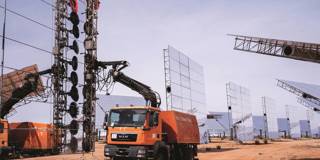Across Africa, climate change has become an acute threat to national security. The effects of adverse climate conditions are deepening gaps in access to food, water, and energy, while shrinking natural resources, social disruptions, and mass displacements are heightening the risk of conflict.
LUSAKA – With vast arable lands, rich reserves of critical minerals, and almost endless solar and wind power potential, Africa could practically be the world’s engine room. Many of its economies continue to be propelled by improved business environments from ongoing policy and regulatory reforms, as well as by an expanded pool of skilled human capital. With the resources and most of the tools in place, the continent has what it needs to become an economic powerhouse.

LUSAKA – With vast arable lands, rich reserves of critical minerals, and almost endless solar and wind power potential, Africa could practically be the world’s engine room. Many of its economies continue to be propelled by improved business environments from ongoing policy and regulatory reforms, as well as by an expanded pool of skilled human capital. With the resources and most of the tools in place, the continent has what it needs to become an economic powerhouse.